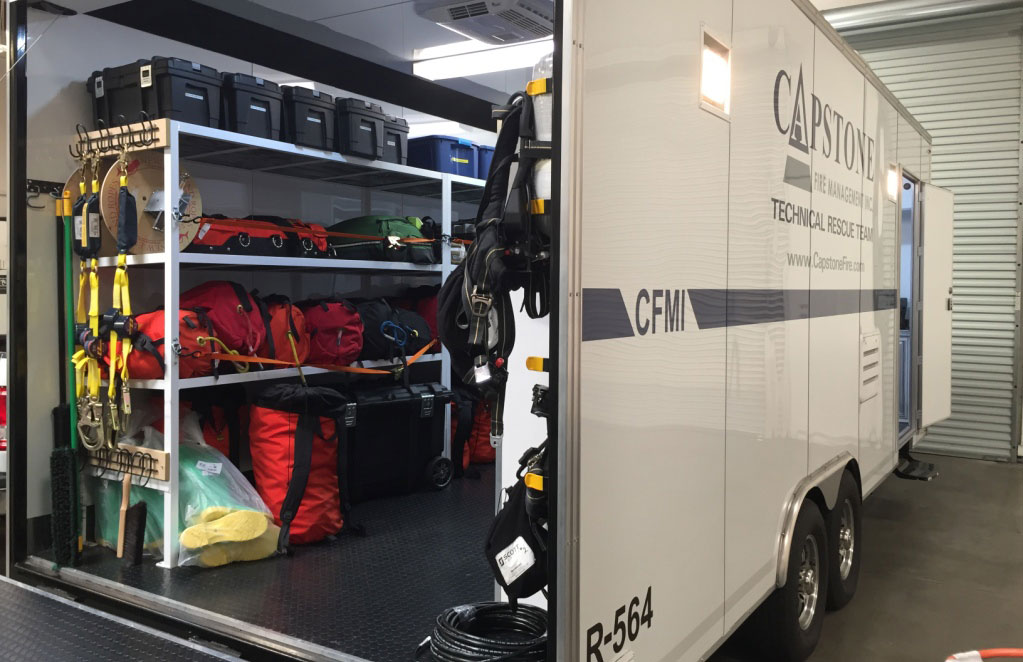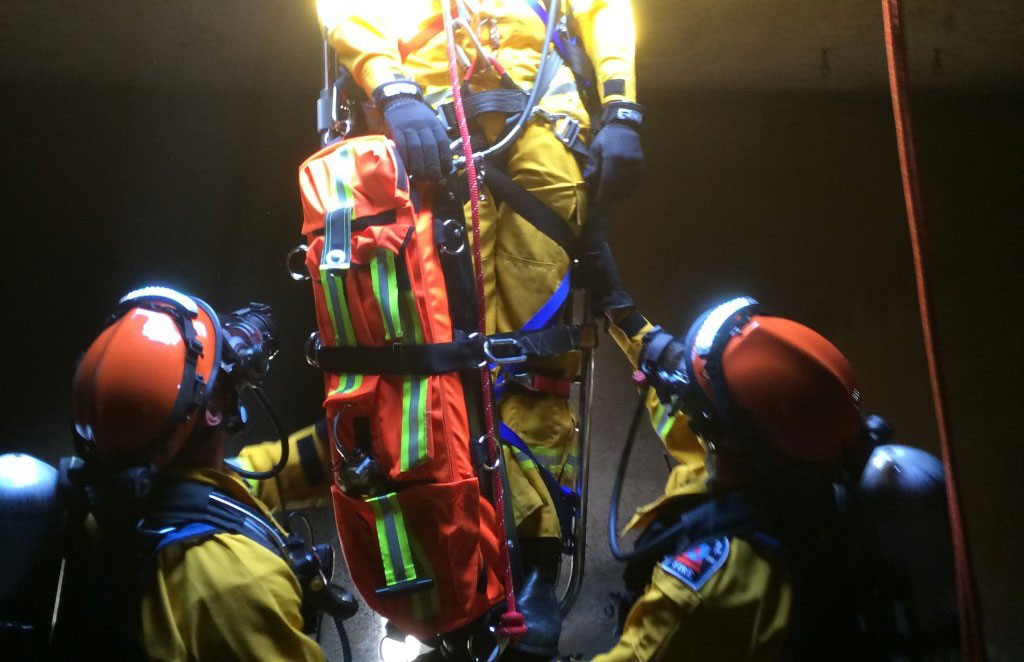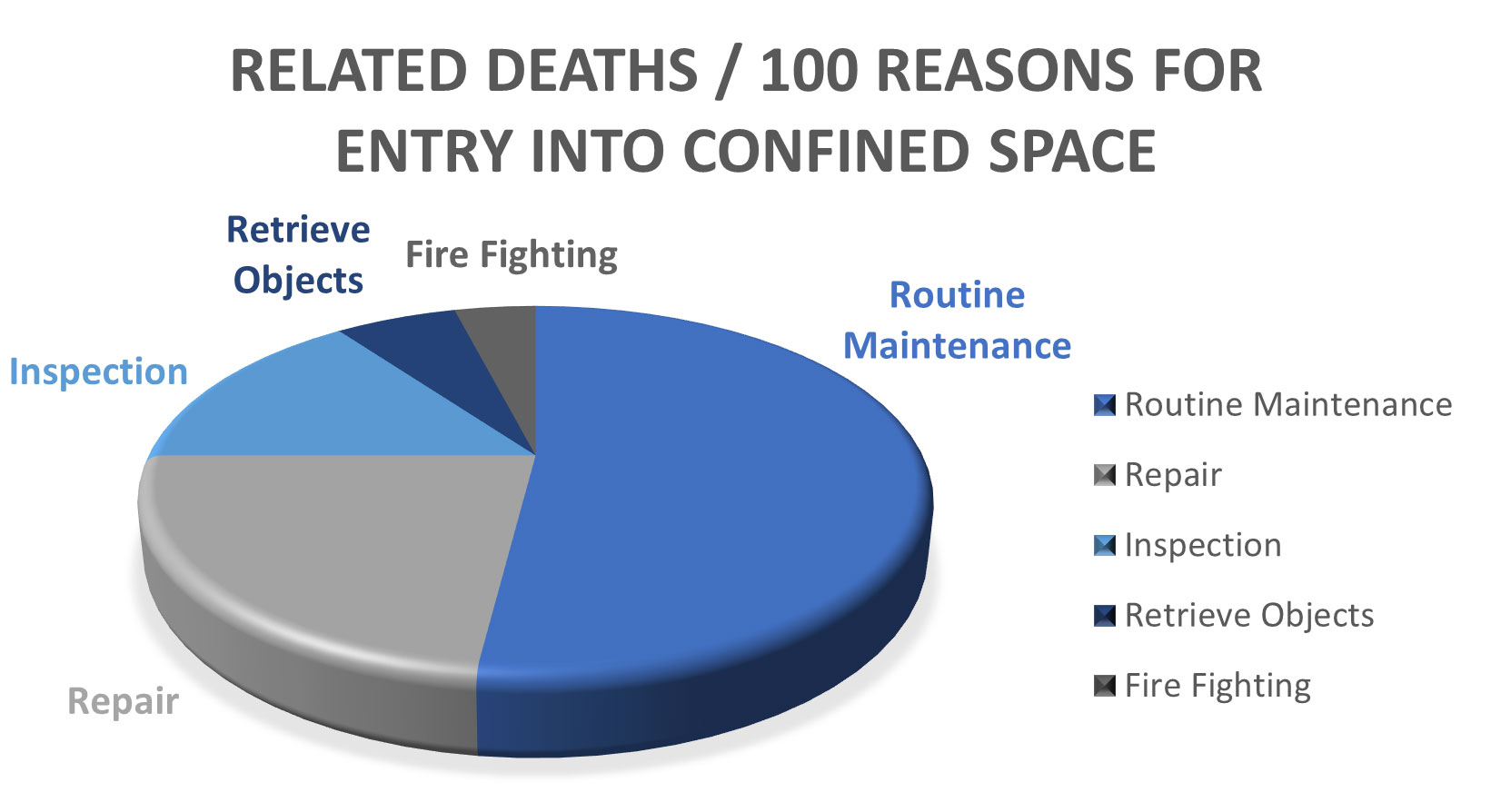Out of 100 deaths that were investigated, the main reasons the workers entered the confined space were to perform their work functions of routine maintenance, repairs, and inspections of the confined space.
Services and the Solutions
Confined space rescue entries can be complex and require preparation and planning. Many people think that confined space rescue is simply having to rescue someone who became stuck in a small space. In reality there are many reasons for a person needing to be rescued, and the majority of them include a medical emergency. Heart attack, heat stroke, asphyxiation or engulfment are some of the more common hazards. Most of these circumstances require medically trained personnel to be at the site in order to provide life-savings efforts where every second counts and can mean the difference between a serious medical emergency or a fatal accident. Capstone Fire & Safety personnel are equipped to handle these emergency events. 9-1-1 calls are initiated first and foremost, but the crucial moments immediately following the incident require the rescue training and medical knowledge our professionals can provide. We value our cross-training protocols, so every one of our employees can be ready at a moment’s notice. With an average of 100 confined space incidents resulting in death each year, we want to ensure every one of your employees goes home safely at the end of the day. Although many companies rely on local emergency services for their confined space rescue plan, this is not a safe option, especially when the rescue incident requires an immediate medical emergency service. Not all emergency responders are trained for confined space entries, according to OSHA. Having a specialized confined space rescue team at the site of the entry is your most reliable way to reduce risk.
Capstone Fire and Safety is a turn key safety solution for Confined Space Rescue.
Confined Space Rescue
Confined Space Assessments
Hazard Assessment, Rescue Planning, Site and Space Evaluation and Classification
Continual Atmospheric Monitoring and Ventilation
Permit required Confined Space Preparation
Documentation
All documentation is done electronically onsite
- Permits
- Atmosphere monitoring
- Equipment calibrations
We believe in transparency and will make documents available upon request
Water Rescue
Capstone water rescue crews provide EMS services and protection for utility companies performing above water maintenance and/or repairs
Wilderness areas provide little to no emergency access, so on-site Capstone crews are essential to maintain a safe working area for all project personnel
Other Technical Rescue Capabilities
High-Angle and Low-Angle Rescue
Tower Rescue
Trench Standby
Rescue Training
Confined Space Awareness Training
- Supervisor role, Attendant role, and Entrant
- Training follows OSHA and the participants, after passing the test, receive a certificate
- Class is approximately 6 hours
- Includes fall protection and basic air monitoring training
First Aid/CPR
Safety Training Courses
Fire Extinguisher Training
Health and Safety Training Heat Illness Prevention Program
Incident Command System
EQUIPMENT
Capstone utilizes state of the art equipment and technology. We are equipped to handle simple and complex projects with single or multiple entry points. Capstone has several vehicles types to customize our approach including light rescue vehicles or rescue trailers on long duration jobs. Equipment follows OSHA regulations and NFPA guidelines for maintenance and life-safety inspections and compliance.
We keep logs for every piece of equipment we own and they are continually maintained by of Chief of Logistics on a monthly and annual basis. Appropriate rescue equipment and training is paramount to ensure the safety of personnel entering a pre-determined confined space area.


QUALIFIED PERSONNEL
Capstone’s personnel undergo extensive background investigations, work capacity testing, physical agility testing, spirometry, and pre-employment drug and alcohol screening.
Capstone rescue personnel attend a minimum of 80-hour technical rescue academy upon hiring so we can test and evaluate their skills and performance before going into the field to work for our clients. Personnel are assigned task books and a career development guide to aid them in achieving experience and readiness for their next position and rank.
Capstone recruits and develops rescue personnel to be a part of the Rescue Division
80-Hour Rescue Academy
- California State Fire Marshal (CSFM) accredited Low Angle Rope Rescue Operations (LARRO)
- CSFM accredited Confined Space Rescue Technician (CSR-T)
- Capstone-specific training to include:
- Advanced equipment techniques
- Entry permits
- Job Safety Analysis (JSA)
All Training is in accordance with OSHA standard 1910.146 and NFPA standard 1006
Many of Capstone’s Wildland Fire Division personnel are cross-trained into the Rescue Division
- Provides an all-hazard fire and rescue person
- We are able to take more experienced personnel and provide extensive training opportunities for them to support Capstone as well as their own careers
- Only personnel approved by the Rescue Division Chief are moved into the Rescue Division
Rescue personnel must maintain compliance with the guidelines set forth in OSHA 1910.126 and NFPA 1006 to include:
- Annual Simulated Rescue Entry and Victim Removal
- Annual Fit Testing
- Annual DOT Physical
Personnel also receive specialized rescue training which may include:
- Capstone Confined Space Leadership course
- CSFM Rescue Systems 1 and 2
- Trench Rescue
- Vehicle Extrication
- Water/Boat Rescue
- Society of ProfessionalRope Access Technicians (SPRAT) course
- Capstone Rescue Task Books
Capstone provides annual rescue training for our personnel that involves challenging rescue drills in different environments.
Industries We Serve
Water Districts
- Wastewater Treatment Plants
- Sanitation Districts
- Public Works
- Oil and Gas Industry
- Turnaround Support
- Construction
Maritime Vessels
Any industry where a confined space rescue need is presented.

